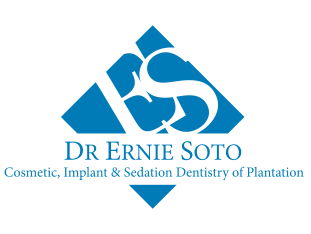tooth and Gum Diesease in Plantation, FL
Tooth and gum disease can affect anyone, regardless of age, gender, and ethnicity. However, it is more common in adults. Tooth and gum diseases are predominantly caused by bacterial plaque. Plaque is a colorless, sticky film that builds up on our teeth from food, beverages, and bacteria. If not removed, it can harden into tartar, which is harder to clean.
What is gum disease?
Gingivitis, the mild form of gum disease, is inflammation of the gums caused by plaque buildup around the teeth. Plaque is a sticky film that forms on your teeth when starches and sugars mix with bacteria in your mouth. The early stages of gingivitis cause red, swollen gums that bleed when you brush or floss. If left untreated, gingivitis can cause permanent damage to your gums and the bones that support your teeth.
Periodontitis is the more severe form of gum disease that involves gum recession and destruction of the tissues and bones that support your teeth. If left untreated, periodontitis can result in loose teeth and tooth loss. Risk factors for periodontal disease include smoking, genetics, diabetes, dry mouth, poor oral hygiene, stress, certain medications, and poor nutrition.
What are the symptoms of gum disease?
Gum disease can have a variety of symptoms, ranging from mild to severe, so you may not notice all these symptoms right away. However, if you notice any of the following signs or symptoms, schedule an appointment with your dentist as soon as possible to discuss treatment.
- Your gums may be reddened or inflamed.
- Dryness in the mouth is another sign of gum disease.
- Bad breath is a possible symptom of an infection of the gum line.
- Your teeth may feel loose. It’s not uncommon for a person with active gum disease to experience this symptom.
- Bleeding while you brush or floss is a symptom of gum disease.
- If your teeth feel more sensitive than usual, it’s a possible sign of gum disease.
- Gums that are receding from the teeth are a sign you may have gum disease.
If you’re experiencing chronic bad breath along with any of the symptoms listed above, you should make an appointment with your dentist right away. These symptoms are not something to ignore! The sooner they’re treated, the better your chances of keeping your gums healthy for a lifetime are.
How is gum disease diagnosed?
The best way to identify gum disease is through a visual examination. Your dentist will assess the gums for redness, swelling, or bleeding around your teeth. Deep cleaning can usually stop the progression of gum disease and prevent the need for surgery in the future.
During your exam and cleaning, your dentist may also take x-rays of your mouth. These images allow us to see the underlying structures of your teeth and jawbone to determine if you have bone loss from advanced periodontitis.
What is periodontal treatment?
When gum disease occurs, your general dentist will suggest the appropriate treatment to take care of the problem. Scaling and root planing are common treatments for addressing periodontitis. During this procedure, your dentist will remove any tartar from your teeth that are below the gum line. The root of your tooth will also be smoothed so that bacteria cannot cling to it and cause infections.
After the procedure, your gums may become swollen and red. This will go away on its own within a few days. However, you may need to use a prescription strength mouthwash to rinse out the bacteria and reduce inflammation.
How to prevent tooth and gum disease?
The best way to maintain healthy teeth and gums is to brush your teeth twice a day and floss once a day. You should also visit your dentist for regular checkups and cleanings. Additionally, eating a balanced diet and avoiding tobacco use can help you prevent gum disease. Since gum disease can be painless and asymptomatic, it’s important to visit your dentist regularly to catch and treat it as early as possible.
To find out more about the dental services offered at our dental practice, call (954) 368-6264 or schedule an online consultation. You can also visit us at 10187 Cleary Blvd STE 103, Plantation, FL 33324.
Office Hours
MON - THU9:00 am - 5:00 pm
FRI9:00 am - 1:00 pm
SAT - SUNClosed
Address: 10187 Cleary Blvd STE 103, Plantation, FL 33324
Email: [email protected]
Phone: (954) 368-6264
